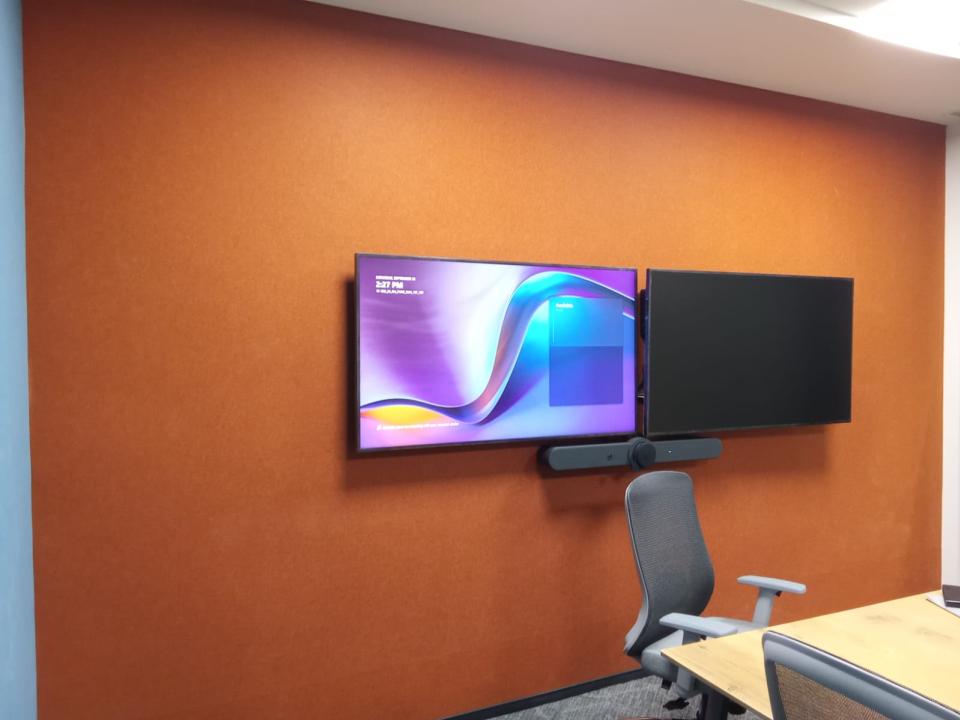Acoustic materials have become indispensable in modern interiors, as they not only manage sound but also enhance aesthetic appeal. Whether you're designing a home office, a corporate workspace, or a recording studio, the right placement of acoustic materials can transform the acoustics and the ambiance. In this guide, we'll explore optimal placement strategies for different types of acoustic materials, with a special focus on PET acoustic panels, acoustic board panels, acoustic wall panels, and acoustic wood panels. Understanding how to use and place these materials effectively can significantly improve sound quality and reduce unwanted noise.
1. Understanding Acoustic Material Basics
Before diving into placement strategies, it's essential to understand why we need acoustic materials and how they work. Sound waves reflect off hard surfaces like walls, floors, and ceilings, creating echoes and noise. Acoustic materials, such as acoustic board panels and PET acoustic panels, absorb these sound waves, preventing them from bouncing around the space. By strategically placing these materials, you can manage reverberation and echo, creating a balanced and pleasant acoustic environment.
2. PET Acoustic Panels for Versatile Sound Management
PET acoustic panels are made from recycled polyester fibers, making them an eco-friendly choice for sound absorption. They are lightweight, versatile, and easy to install, ideal for settings where sound clarity is crucial. These panels are available in various colors, sizes, and densities, allowing for a range of design possibilities.
Optimal Placement:
Ceilings: In open spaces or high-ceiling rooms, placing PET acoustic panels on the ceiling can help control noise by capturing sound that would otherwise bounce off the ceiling. It’s especially useful in conference rooms and restaurants, where people tend to speak louder.
Behind Speakers or Screens: In spaces with a lot of audio-visual equipment, such as theaters or auditoriums, installing PET acoustic panels directly behind speakers can optimize sound quality, making the sound clearer and minimizing distortion.
Workstation Partitions: In open office layouts, PET acoustic panels are often used as desk dividers. This arrangement helps create a quieter environment by absorbing sound between workstations.
3. Acoustic Board Panels for Targeted Noise Control
Acoustic board panels are dense and highly effective in absorbing sound. They work exceptionally well in spaces where noise needs to be tightly controlled, such as recording studios or sound editing rooms. These panels are typically mounted on walls and are available in various textures, patterns, and colors to blend with the room’s decor.
Optimal Placement:
Walls Behind the Listener: In a recording studio or a listening room, placing acoustic board panels on the wall behind the listener can absorb sound waves and eliminate echo. This arrangement provides a balanced listening experience and minimizes distractions.
High-Traffic Areas: In spaces with high foot traffic, like hallways or common areas, installing acoustic board panels can reduce noise levels and prevent sound from spreading into quieter zones.
Corners: Sound tends to accumulate in corners, creating a phenomenon called bass buildup. Installing acoustic board panels in room corners can prevent this issue, providing a more even distribution of sound.
4. Acoustic Wall Panels for Enhanced Room Acoustics
Acoustic wall panels are specifically designed to improve room acoustics by absorbing mid- to high-frequency sound waves. They’re ideal for offices, conference rooms, classrooms, and home theaters where speech clarity is paramount. These panels are highly customizable and come in different finishes, allowing you to match them to any interior >
Optimal Placement:
Directly Across from the Sound Source: To maximize sound absorption, place acoustic wall panels directly opposite the main sound source. This helps reduce echoes and reflections, making the room acoustically balanced. In home theaters, for instance, placing panels opposite the television or speaker setup can greatly improve audio clarity.
On Large, Flat Walls: Large, flat walls can cause sound waves to bounce back into the room. By installing acoustic wall panels on these surfaces, you can minimize reflection and create a more controlled sound environment.
In Classrooms and Offices: In educational or corporate settings, placing acoustic wall panels on walls near the seating area enhances speech intelligibility, making it easier for people to hear the speaker clearly.
5. Acoustic Wood Panels for Aesthetic and Acoustic Benefits
Acoustic wood panels combine functionality with aesthetics, adding a natural and sophisticated look to spaces while also improving sound quality. These panels are typically perforated or grooved, allowing them to absorb sound while enhancing the room’s visual appeal. They are particularly popular in settings where both aesthetics and acoustics matter, like restaurants, galleries, and auditoriums.
Optimal Placement:
Ceilings and High Walls: Acoustic wood panels are often installed on ceilings and high walls, where they can absorb sound without being in the direct line of sight. This positioning makes them suitable for large, open spaces, providing a balance between aesthetics and acoustic performance.
Along the Back Wall in Auditoriums: In auditoriums or lecture halls, placing acoustic wood panels along the back wall can help absorb sound that travels towards the rear of the room, preventing echoes and ensuring sound clarity for the audience.
As Accent Pieces: For restaurants or retail stores, acoustic wood panels can be used as accent walls. This not only controls noise but also adds a warm and inviting ambiance to the space.
6. Layering and Combining Acoustic Panels for Maximum Effect
Using a combination of PET acoustic panels, acoustic board panels, acoustic wall panels, and acoustic wood panels can deliver exceptional sound control, particularly in larger or multi-purpose spaces. For example, in an open-concept office, you might use PET acoustic panels for desk partitions, acoustic board panels on walls, and acoustic wood panels on ceilings to create an immersive and controlled acoustic environment.
Optimal Placement Strategy:
Layered Panels on Walls and Ceilings: In spaces where sound management is crucial, such as a conference room, consider using acoustic board panels on the walls and PET acoustic panels on the ceiling. This setup maximizes sound absorption and minimizes echo.
Strategic Placement in Multi-Use Rooms: In spaces like classrooms or multi-purpose rooms, using acoustic wall panels on the walls and acoustic wood panels as ceiling features can help manage sound for various activities, from lectures to group discussions.
Conclusion: The Impact of Strategic Placement
Optimal placement of acoustic materials is key to achieving the best sound control. By carefully positioning PET acoustic panels, acoustic board panels, acoustic wall panels, and acoustic wood panels in different areas of a room, you can transform the acoustic dynamics, ensuring clarity and comfort. For any project, consider the purpose of the space, the sources of sound, and the room’s layout to determine the ideal arrangement of these materials. With the right strategy, you can create a well-balanced sound environment that enhances both the functionality and aesthetic of the space.










